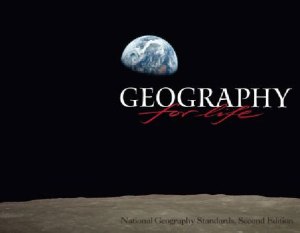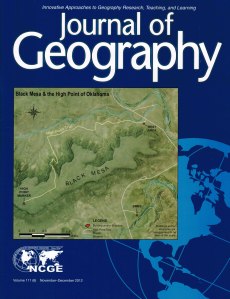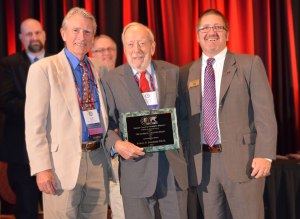 After five years of careful work involving dozens of content experts, editors, and reviewers, the updated National Geography Standards have been published. The new document, Geography for Life: National Geography Standards, Second Edition, outlines 18 Standards that identify what students should know and be able to do in grades 4, 8, and 12.
After five years of careful work involving dozens of content experts, editors, and reviewers, the updated National Geography Standards have been published. The new document, Geography for Life: National Geography Standards, Second Edition, outlines 18 Standards that identify what students should know and be able to do in grades 4, 8, and 12.
According to Roger Downs, professor of geography at The Pennsylvania State University and chair of the Standards Content Committee, the updated Geography for Life reflects many of the changes in geography since publication of the original document in 1994. Topics such as globalization and human dimensions of global change are more fully integrated, he said, and the skills have been revised to incorporate the use of geographic information systems (GIS) and geospatial technology.
Short essays, designed to guide teachers but also allow them to find their own creative ways to encourage students to learn geography, introduce each of the Standards. “The Standards are better thought of as guidelines for what teachers might do, not a template for what they should do,” said Downs.
The new document’s layout and organization received attention during the revision process. “The major difference from the first edition, apart from the substantive updating, is in the structure of the Standards,” said Downs. “For each Standard, by use of careful scaffolding, there is an explicit attempt to build understanding from grade level to grade level.” This scaffolding illustrates how the geography content could be presented at each grade level.
“The redesign of the document enables a teacher or curriculum developer to see simultaneously how ideas are structured within a grade level and across the three grade levels,” Downs said.
“If you want to look ahead to see where students are going, or if you’re at the 12th grade level and want to look back to see what students may or may not have had… it’s all on one page for you as you look at a Standard,” said Susan Gallagher Heffron, Senior Project Manager for Geography Education at the Association of American Geographers and a member of the Standards Content Committee.
Gallagher Heffron served as project manager for the updated Geography for Life. She and Downs were co-editors of the document. The second edition also has new photographs and maps and an expanded glossary of geography terms, which Gallagher Heffron said should be a useful instructional tool for teachers using the Standards, especially those who are new to geography.
She also cited new emphasis on “doing geography”—helping students learn to ask and answer geographic questions—as another important update. Other modifications should make the document itself easier to use. The book’s spiral binding allows it to lay open on a desk.
Geography for Life was developed under the auspices of the Geography Education National Implementation Project (GENIP), a consortium involving the Association of American Geographers, the American Geographical Society, the National Council for Geographic Education, and the National Geographic Society.
NCGE will manage sales and distribution of the document. The National Geographic Society is developing a companion website focused on the updated Standards.
Gallagher Heffron said she hopes curriculum developers, educators, textbook publishers, and others embrace the updated Standards and create products that aid teachers.
“The overall goal remains the same,” Downs said. “This is geography for life, an indispensable way of understanding the world and functioning in it.”
To order your copy, please visit www.ncge.org/geography-for-life.
–Tim Hill



